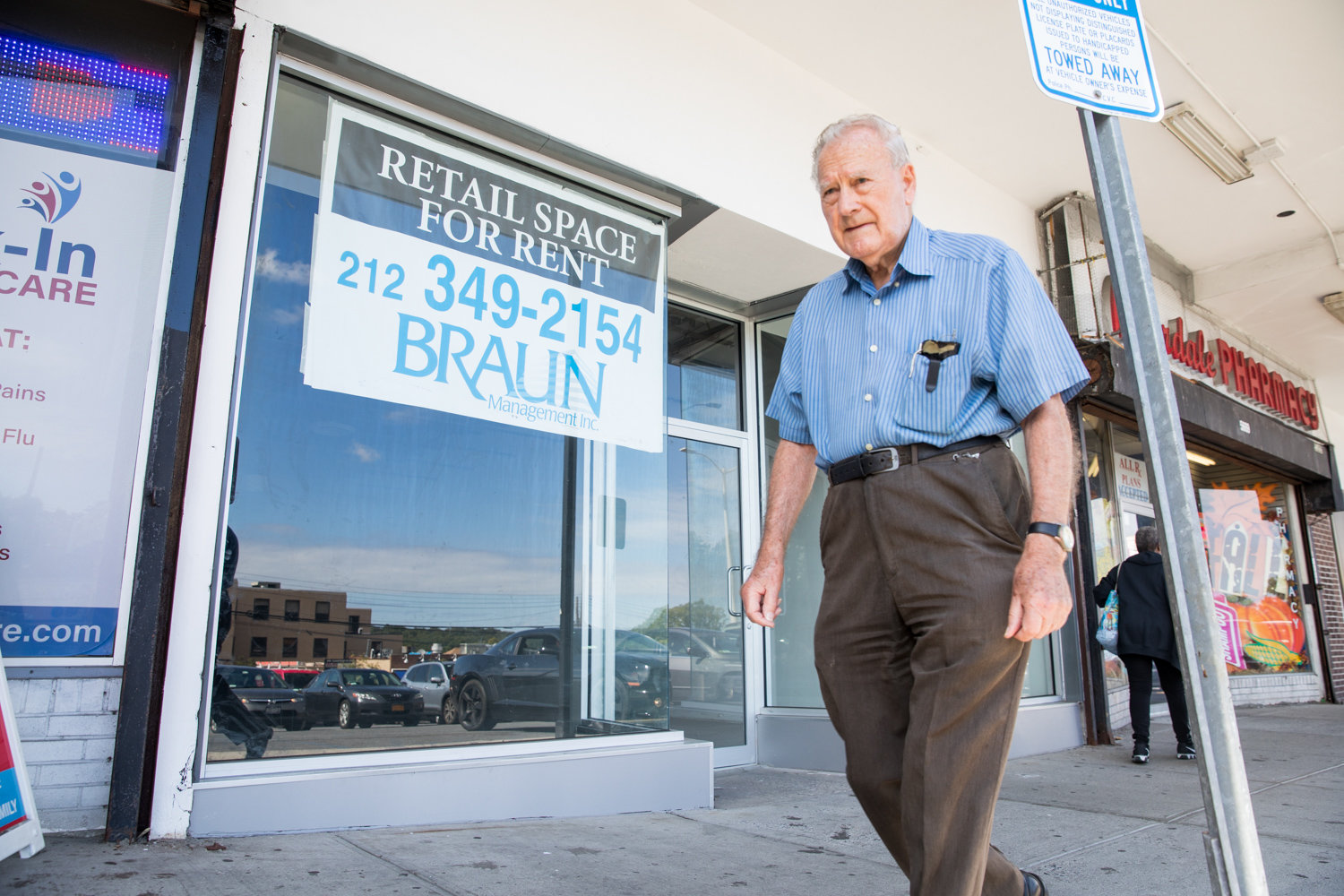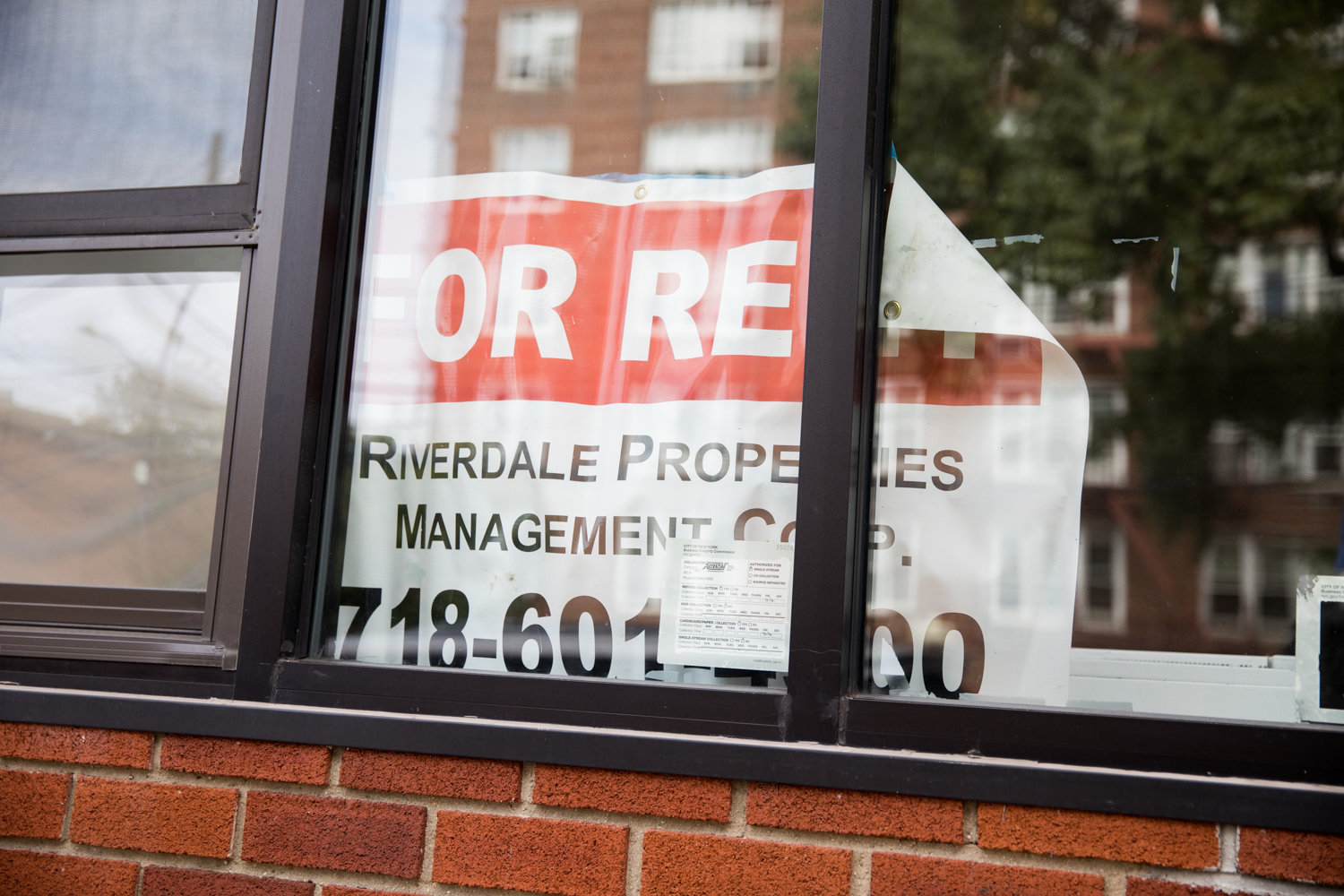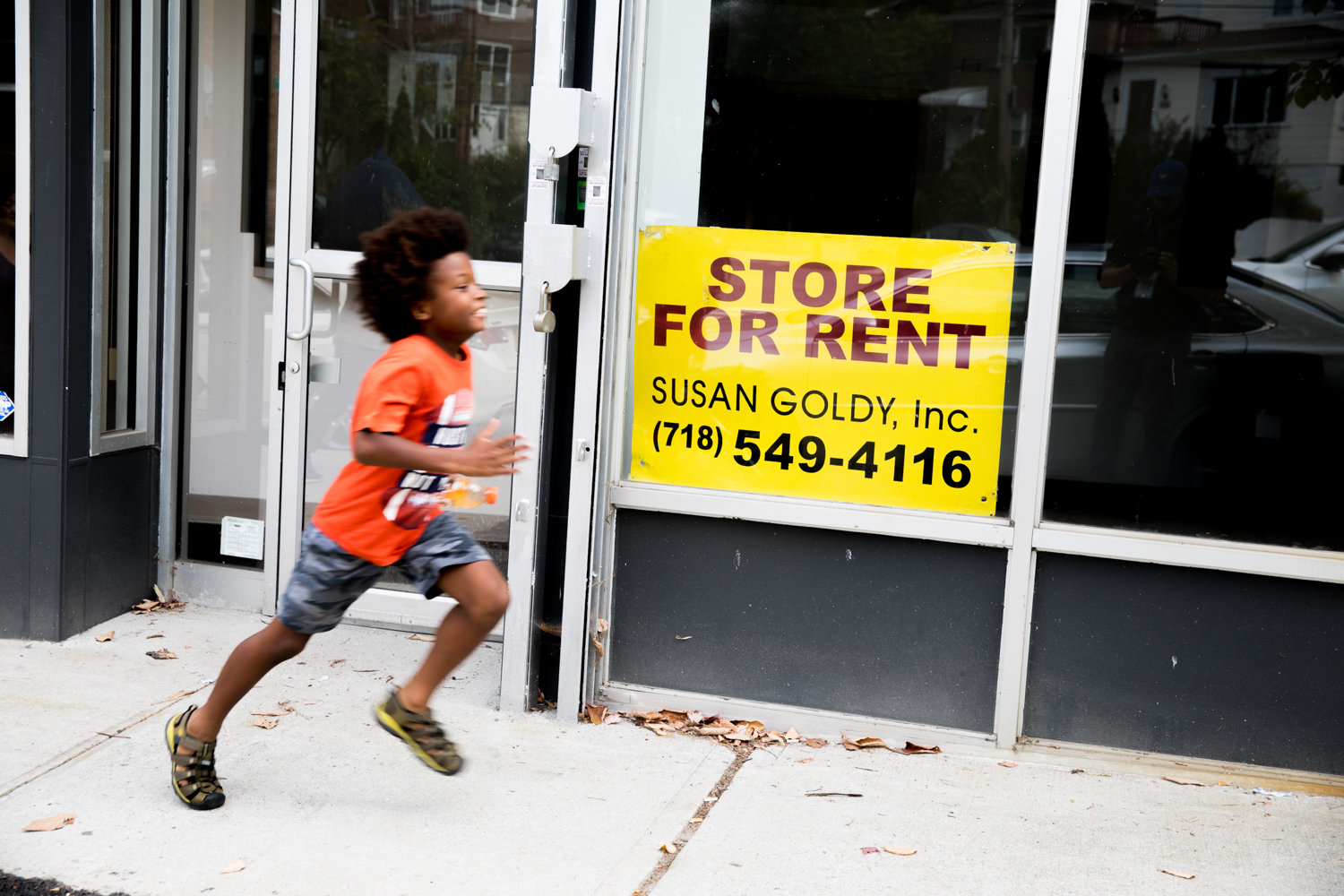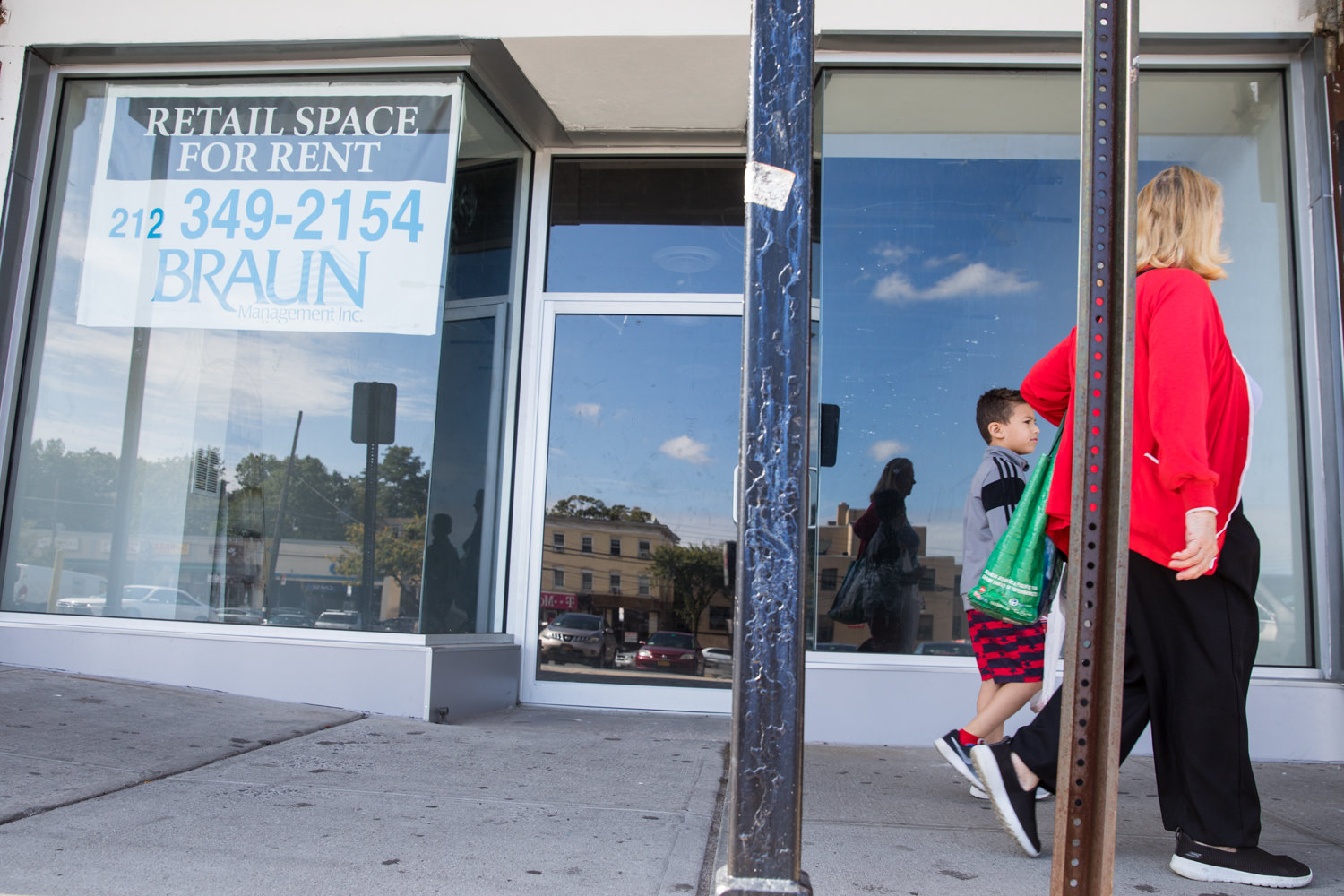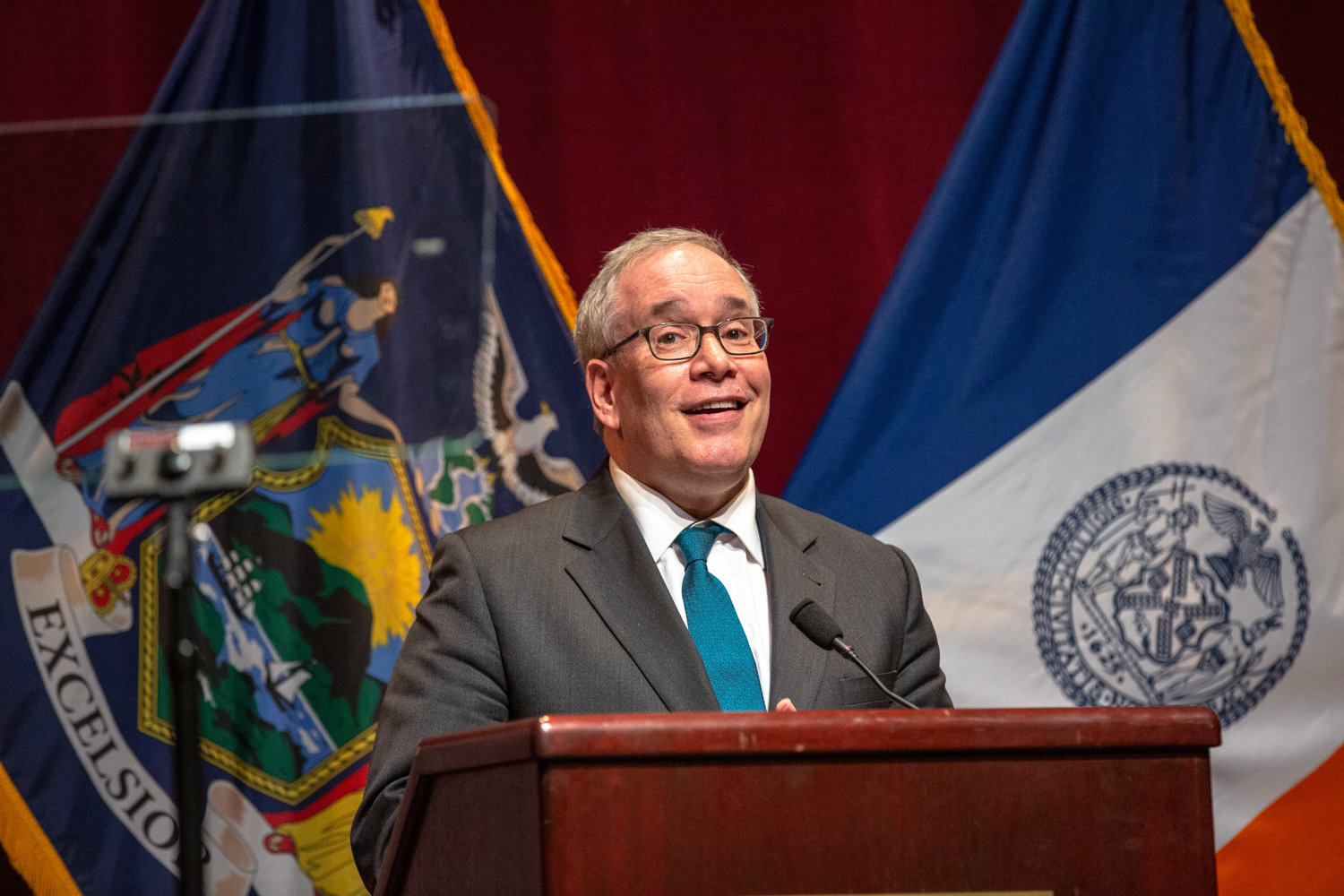Bronx retail vacancy not bad, not great either
New report suggests more work needs to be done to save neighborhood stores
It’s become common these days to see beloved shops — in business for decades — lock their doors for the last time. And in their place, a storefront sits empty for months, sometimes years.
There’s a lot of finger-pointing when examining the cause for high retail vacancies. Online shopping, greedy landlords, increased minimum wage, government red tape and various other villains have been blamed.
But the truth needs a closer look. A recent report by city comptroller Scott Stringer broke down what’s driving lower-than-average retail occupancy in the Bronx and other outer boroughs. Using several types of city data, the report looked closely at patterns of retail vacancy over a 10-year period beginning in 2007, correlating it with shopping and economic trends.
During that time, vacancy in the Bronx peaked at 7.4 percent in 2010 before settling at its current level, just a little higher than 5.8 percent rate citywide.
Retail vacancy doubled across the city during that decade, with the largest hit absorbed by the outer boroughs. The large shopping centers and malls on Staten Island were hit the hardest. Brooklyn, Queens and the Bronx haven’t bounced back to levels from before the 2008 recession, but things are looking better.
In fact, merchant counts in the Bronx have jumped 55 percent since 2012, according to the report. Uptown Manhattan and Harlem are close behind, with merchant counts increasing by nearly 43 percent.
But it’s not all good. Between 2007 and 2017, vacant retail square footage doubled in the Bronx — from 830,000 to 1.6 million square feet. That’s a jump from the equivalent of 14 football fields to 28.
Some neighborhoods in the Bronx have unusually high vacancies. In Throggs Neck, for example, vacancy is at 17.5 percent, while Mott Haven is just under 15 percent.
So what’s driving higher-than-average vacancy? Three main culprits were identified as soaring online shopping, high rents, and a tangle of city regulations.
Online shopping has been a huge disruptor to brick-and-mortar business. When goods are easily available online — often at a lower price — retail space is used less for selling things. Instead, there’s a higher demand for services like salons, restaurants and bars, according to the report. They often crop up in spaces that were formerly shops and boutiques.
Amazon’s nationwide sales rose more than $163 billion between 2007 and 2017. The number of retail outlets in New York City increased nearly 20 percent in that same time period. But the biggest increase was in personal services, rising by 50 percent, according to the report, while bars and restaurants grew 65 percent.
Retail growth has largely taken place among grocery stores, laundry and dry cleaning businesses, and specialty food stores — retail highly correlated with a denser population and income growth.
When a space changes from selling goods to providing services, a long delay in the city permitting process can result in prolonged vacancy, according to the report. The longer it takes to change the space’s use with the city’s building department, the longer the storefront stays empty.
High rents are also to blame. Retail rents during that decade increased 22 percent, the report said, but were much higher is certain parts of the city. Stringer’s report found that a 1 percent increase in average retail rent is linked to 0.33 percent increase in empty retail space.
Higher property taxes folded into a business’ rent also contribute. The amount paid by retail businesses doubled to $2.2 billion over the decade. Property taxes amounted to about 23 percent of total retail rents.
“The people the higher rents affects the most are the people just starting out,” said Katherine Broihier, director of the Kingsbridge Business Improvement District. “They just can’t make it because they can’t make the rents with what they’re selling.”
A pizzeria has to sell a lot of pies to pay sometimes tens of thousands in rent payments, she said. For small stores selling long distance calling cards, cigarettes and beer, their presence on the street may be a flash in the pan if business isn’t good.
Vacancies in the Kingsbridge BID are caused by a combination of things, Broihier said. Some landlords keep their spaces open, hoping a major chain will move in and agree to pay the asking rent, gutting the place and making it look better than new.
“That’s a dream,” she said. “It won’t happen because these are old buildings and need a lot of work.”
If it’s a large space that needs a new tenant, Broihier said, it will take a specific business to occupy it.
“Some of these landlords, they’re not bending over backward to try to market their properties because they own so many,” Broihier said. “I hate to put it this way, but this little place in the Bronx called Kingsbridge is kind of small and not a huge priority to them.”
What has risen in the wake of failed retail are medical offices willing to move into storefronts, where before they were tucked away inside apartment buildings nearly out of sight. These offices have renovated old spaces to look nice. It’s something Broihier hasn’t seen before.
Beginning businesses trying to get a leg up will even work out agreements with some unscrupulous landlords to rent month by month without a lease.
“And then if they miss a month, they just lock the doors on them,” Broihier said. “Then there’s nothing the business can do because there was never a lease.”
Other landlords write into their lease agreements policies demanding three to six months upfront rent without any guarantee the money will be returned once the lease is up, she said. If the business owner can’t pay so far in advance, landlords will offer to let them in, but any problems with the space — like plumbing or fire code issues — will be the responsibility of the tenant.
Empty storefronts are everywhere. Merchants with the Riverdale Main Street Alliance are watching the breakdown of neighborhood retail at a time when the economy is said to be booming, said group spokesman Christopher Rizzo. What will the local retail landscape look like if there’s an actual recession?
Stringer’s report didn’t look at Riverdale specifically, but if it did, Rizzo suspects vacancy rates would be similar to those identified in both Throggs Neck and Mott Haven.
“This should not be the case in a community like Riverdale, which has tens of thousands of middle class residents ready to shop and dozens of leading city schools and institutions,” Rizzo said.
Regulations, high property taxes and online retail are big challenges, but so are issues like transportation, said Sergio Villaverde, chair of Community Board 8’s economic development committee. The city’s transportation department recently announced plans to eliminate street parking in Marble Hill to make way for a southbound dedicated bus lane. That, Villaverde said, will make it difficult for customers to get to stores.
“Running a business is hard,” he said. “There’s a lot of stress on small businesses that aren’t necessarily alleviated by the city. I don’t think people say, if given a choice, that this is a place that I want to open up and continue my business.”

